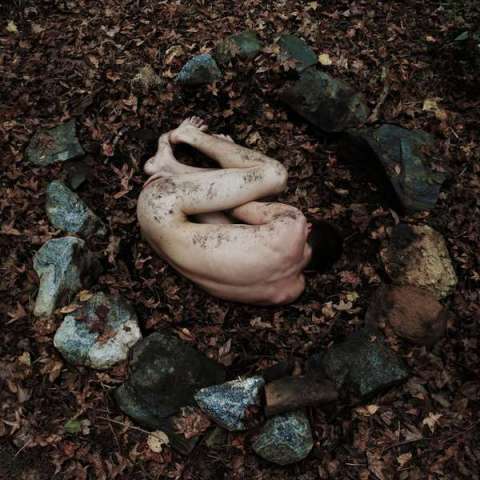Exploring The Architecture of Reality
Soul Retrieval
By Tai Carmen
“For what is a man profited, if he shall gain the whole world, and lose his own soul?” ~ Jesus (Matthew 16:26)
Part I
Our language is rife with references to what has traditionally been
described by shamanic cultures as ‘soul loss’ — “Nobody’s home,” we
might say of an empty-eyed co-worker. Or, in a funk ourselves: “I feel
like a part of me is missing.” Popular songs site it casually — I don’t know where my soul is / I don’t know where my home is (Nelly Furtado, “I’m Like A Bird”).Yet, these expressions are so common, we often use them as descriptors without fully investigating their implication.

“Many of us today don’t feel totally whole, don’t feel as if we are all here,” relates Sandra Ingerman in her book Soul Retrieval: Mending the Fragmented Self.
“Few of us live as fully as we could. When we become aware of this, we want to recover the intensity of life, and the intimacy, that we once enjoyed…We want to come home more fully to ourselves and to the people we love.”

Many turn to the shamanic arts for language and methodology which address our collective angst with a soulfulness lacking in modern lexicon.
“The re-emergence in the late twentieth century of shamanism — with its lively and concrete notion of soul — seems to be a response to a very depressing cultural reality,” notes Jungian analyst John Ryan Haule. ”In the past six or seven hundred years we have undergone a consciousness-shift of 180 degrees. Formerly soul was our primary reality. Now we have only a body and a rational ego.
“The material conditions of our lives have improved immeasurably, but we’ve lost the imaginal and transcendent scope that belongs to the reality of soul. In a situation like this, it is often the depressives among us who are the most realistic regarding the impoverishment of our human existence.” (“Depression & Soul-Loss.”)

According to modern writers on the ancient subject, soul loss accounts for depression, anxiety, a sense of alienation, incompleteness and disconnection, a feeling of being “spaced out,” or “sleepwalking” through life. Extreme cases include coma, psychosis, fugue states and dissociative identity disorders.
Interestingly, the concept that a vital aspect of the self flees or retreats during experiences of extreme pain or disturbance is an idea shared by shamanism and psychotherapy alike. Psychotherapy calls it “disassociation,” shamanism calls it “soul loss.” The purpose in both cases is self-protection.

Modern shamanic healers explain that we all lose bits and pieces of our soul, or vital essence, as we go through life.
The cause doesn’t have to be something as monumental as an accident or as extreme as abuse. It can be as simple as a small child’s sensitivity to her parents’ psychic tension or continued arguing. Little by little, parts of ourselves withdraw and become seemingly lost to us.

Rejected elements of the personality are banished from conscious awareness — Jung’s concept of the psyche’s ”Shadow” aspect. This is done unconsciously, to ease the cognitive dissonance of harboring seemingly conflicting or ambiguous feelings; what modern psychology calls “compartmentalization” and repression.
Denied aspects — such as repressed sadness, anger, inner child or libidinous impulses — are effectively exiled. But they do not disappear. They continue to exist “underground,” as it were, in the subterranean caves of the psyche, causing emotional alienation, discomfort and disconnection from self.
The good news is that excavation of these buried aspects — and a renewal of their accompanying vital forces — is always possible, and the focus of psychotherapy and shamanic healing alike.

“An aspect of the infinite soul fleeing under duress is a state everyone has at some point experienced, regardless of terminology or ideology applied,” comments Kelley Harrell in her Huffington Post article, “The New Treatise on Soul Retrieval.”
The most common approach of neo-shamans is to echo the ancient model of shaman-as-guide in the netherworlds of psyche/non-ordinary reality. As pioneering anthropologist Mircea Eliade wrote in his now classic text “Archaic Techniques of Ecstasy”:
“Only the shaman can undertake a cure of this kind. For only he ‘sees’ the spirits and knows how to exorcise them; only he recognizes that the soul has fled, and is able to overtake it, in ecstasy, and return it to its body….Everything that concerns the soul and its adventure, here on earth and in the beyond, is the exclusive province of the shaman.”

However! A fascinating synthesis between psychotherapy and shamanic soul retrieval has been in the works over the past several decades.
“Upon his return from studying with teachers in India, Australia, and South America, shaman Ross Bishop transformed the Soul Retrieval process into a method that could be embraced by the Western mind and heart by making a simple shift in the roles of Shaman and client,” relates psychotherapist, author and soul retrieval practitioner Selena Whittle.
“In this contemporary method of Soul Retrieval, the essential elements of the process are the same. There is a shamanic journey into the inner world where the wounded part of the self is identified, healed and brought back; however, the client does the work and is guided by the Shaman. The client takes the shamanic journey. The client identifies the part of the self that is wounded. The client builds a relationship with that part of the self, heals it, then brings it back for integration.
“The Shaman guides the client every step of the way, helping the client navigate the internal world of the psyche, guiding the client in the potent words or actions that are needed to build the relationship with the fragmented aspect of the self, to heal it and to bring it back. The shamanic journey becomes a shared experience, the Soul Retrieval a shared healing intervention.”

For more information on how to perform these inner excavations yourself Ross Bishop’s “Healing the Shadow” details the process. Both Selena Whittle and Ross Bishop offer in-person and phone-based sessions.
But let me initiate you right here and now into a simple yet profound method, which you can practice in the comfort of your home.
Part II
1. Create your inner sanctum. This could be anything from an ornate temple to a simple spot by a running brook. The important part is that the setting has identifiable features, which can be recreated, and that the space makes you feel empowered, centered, safe and calm. Mentally construct as many details — sights, sounds and smells — as possible. Lie back, get comfortable and spend some time really making your inner sanctuary come to life behind closed eyes. (*The bath, with some low light, candles, calming scents and salts, is an excellent place to do soul work.)

2. Call in the missing soul part.
Decide which aspect you are going to reach out to before settling in by first looking at the problem areas in your life. For example, if you are having issues with anxiety, call in “the one who feels anxious.” If you are dealing with addiction, call in “the one who is addicted.”
If you are a visual person, the rejected aspect will likely take form in your mind’s eye. If you are not, you may simply get a feeling or “thought package” of insight — though visualization is encouraged with this particular method.
3. Reach out, reassure, & connect.
Remember, these inner aspects are in hiding because they have been wounded, ridiculed, banished, frightened. They are like scared children — who have not developed beyond the age at which they fled — and must be reached out to accordingly. So its important to project a sense of deep compassion towards them if you’re to inspire their trust.

Tell them you wish to discuss their unmet needs.
These rejected aspects, which you may have deemed bad, difficult, or unacceptable, actually have legitimate needs, which — as they are not being met by you, their guardian — are being substituted with unhealthy behavior. The coping mechanism employed by the exiled aspect, however far from your ideal, is truly its best effort with the tools at hand.
As Lebanese poet Kahlil Gibran said: “when good is hungry it seeks food even in dark caves, and when it thirsts it drinks even of dead waters.” (“On Good and Evil.”)
Explain mentally to your exiled aspect that you are here to increase communication between their awareness and your conscious personality. Remind them you both have the same goal of wellbeing and wholeness, because ultimately, you are one being. Any sense of isolation and disconnection has been a fear-driven illusion based on pain and misunderstanding. Now you are calling home your missing parts. If they have felt unloved, give them the love they crave. You have all the power. Use it.

4. Test for authenticity.
These injured aspects have a long history of feeling unsafe in the presence of the too often accusatory and judgmental conscious mind. As a result, they will often cloak themselves in guarded energy, which can have a menacing impression. This is not the true aspect, but a self-protective mask.
Like any vulnerable creature attempting to seem stronger than it feels, this protective presentation may take the form of something frightening. Practitioners refer to this as “entity” presence, which denotes fear-based energy that isn’t yours but is being used by the wounded inner aspect like armor.
This same goal can be achieved by the inner aspect through opposite means, by presenting an overly “goody-two-shoes” image (“See? I’m perfectly fine. Not hurt at all.”)

So it is necessary to gently test and question the initial appearance of the invited aspect by asking if it is an entity. In your sacred space the aspect can not lie. Even if it says “No” with its mouth, it’s shape may shift or the eyes may flicker, telling a different story and betraying its true nature.
It should be noted that simply because an image is disturbing does not automatically make it false “entity” energy. It can just as easily be the symbolic representation of the feeling-state of the soul part—it may feel, and thus present as, bruised, starved, beaten-up or neglected.

Keep probing its authenticity gently until you feel it has lain down its defenses and actually offered its true, vulnerable self at which point reach out and initiate a compassionate dialogue. A good place to start is by asking how you can help.
If the answer is simple and true, you know it’s the soul part speaking. If the reply is too convoluted or complex, it’s an entity-energy defense, or your cerebral analysis kicking in; start over and await the answer without assumption, projecting compassion.
5. Identify Source of Disconnection, Correct Misunderstanding
Once assured of the fragmented aspect’s authenticity, ask it to show you at what age it became separated. It may show you a particular scene or instance. Ask how this situation made the soul part feel. What was the message it received? Usually, something in the “Not good enough” category will surface. As with small children who blame themselves for their parents’ divorce or general unhappiness, the impression of unworthiness will invariably be based on a misinterpretation of events. With compassion, correct this misunderstanding. The fragmented aspect needs to hear it is worthy of love. Bring it home by embracing this exiled aspect of yourself; give it the love and acceptance it has been hereto denied.
6. Stay connected afterwards.
The goal is to continue the newly forged relationship beyond your inner journey into your everyday life, eventually forming a full integration between the formerly exiled piece and your conscious awareness. Check in with the newly rediscovered aspect throughout the days following your journey. How does he or she feel? Are you meeting the needs discussed with more awareness?

What makes this method different from, and often more effective than, regular “talk therapy” is the willingness to surrender conscious mind constructs to the wild and telling symbolism of the subconscious. In this way cerebral analysis is transcended and the beating heart of true experience touched.
What may read as hokey can be extremely powerful in a real-time, step by step process. After all, these are the parts of self from which we are always running, from whose pain we so often seek distraction. Giving them back their voice, and gracing their needs with our attention, can be a life-changing integration.
Ultimately, whether you regard this excercise as symbolic or literal doesn’t matter. As French poet Baudelaire said, this world is a “forest of symbols.”

The inner fragmentation experienced by so many in this modern time mirrors the compartmentalization tendencies of society itself.
“The natural environment is treated as if it consisted of separate parts to be exploited by different interest groups. The fragmented view is further extended to society which is split into different nations, races, religious and political groups. The belief that all these fragments — in ourselves, in our environment and in our society — are really separate can be seen as the essential reason for the present series of social, ecological and cultural crisis.” ~ Fritjof Capra, (The Tao of Physics)
In a so-called civilized world, which so often dismisses the idea of soul and then complains of feeling empty, soul retrieval — reclaiming personal wholeness — is a heroic act.

https://taicarmen.wordpress.com/

No comments:
Post a Comment